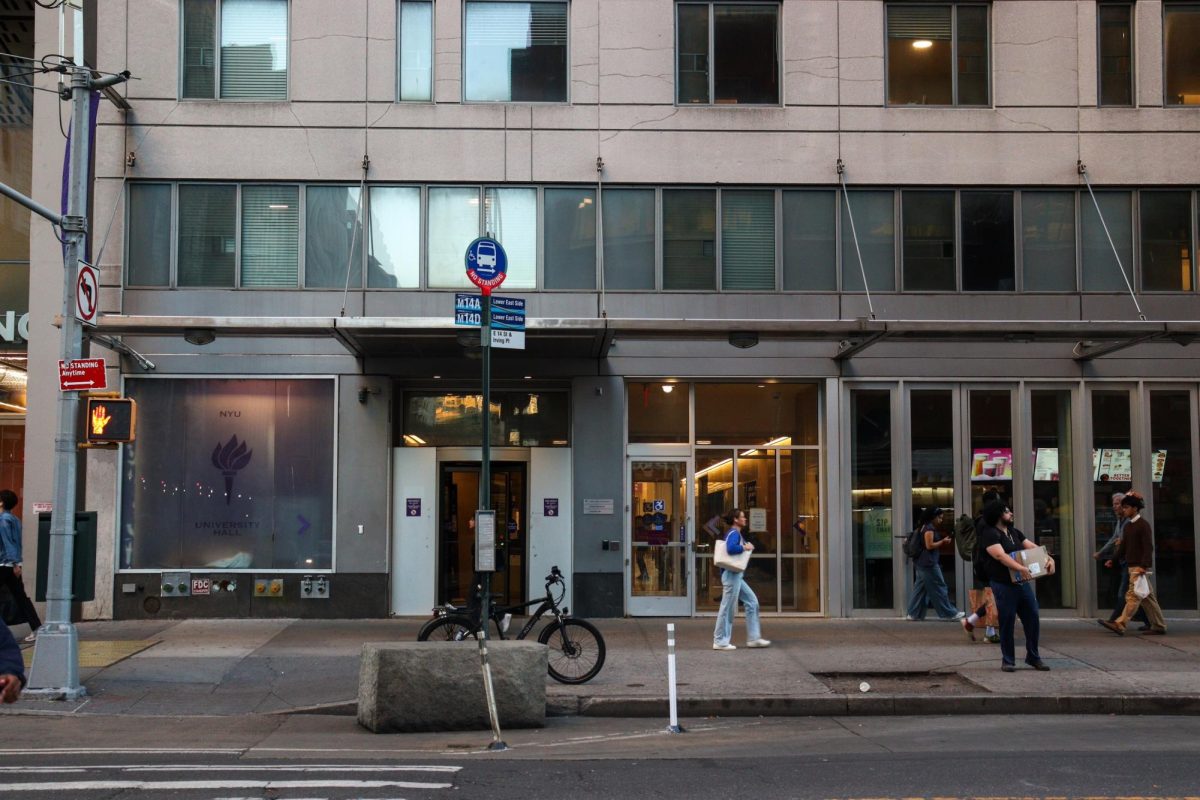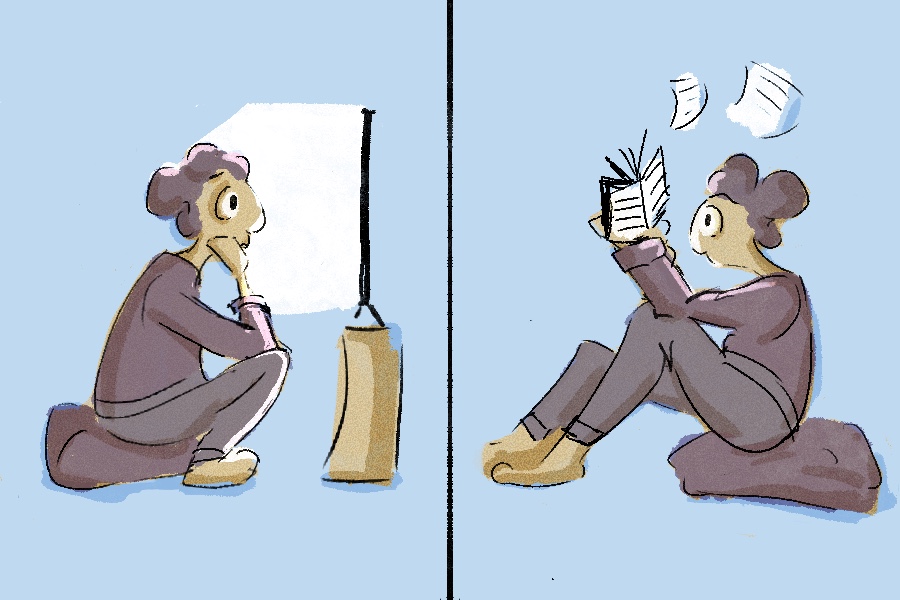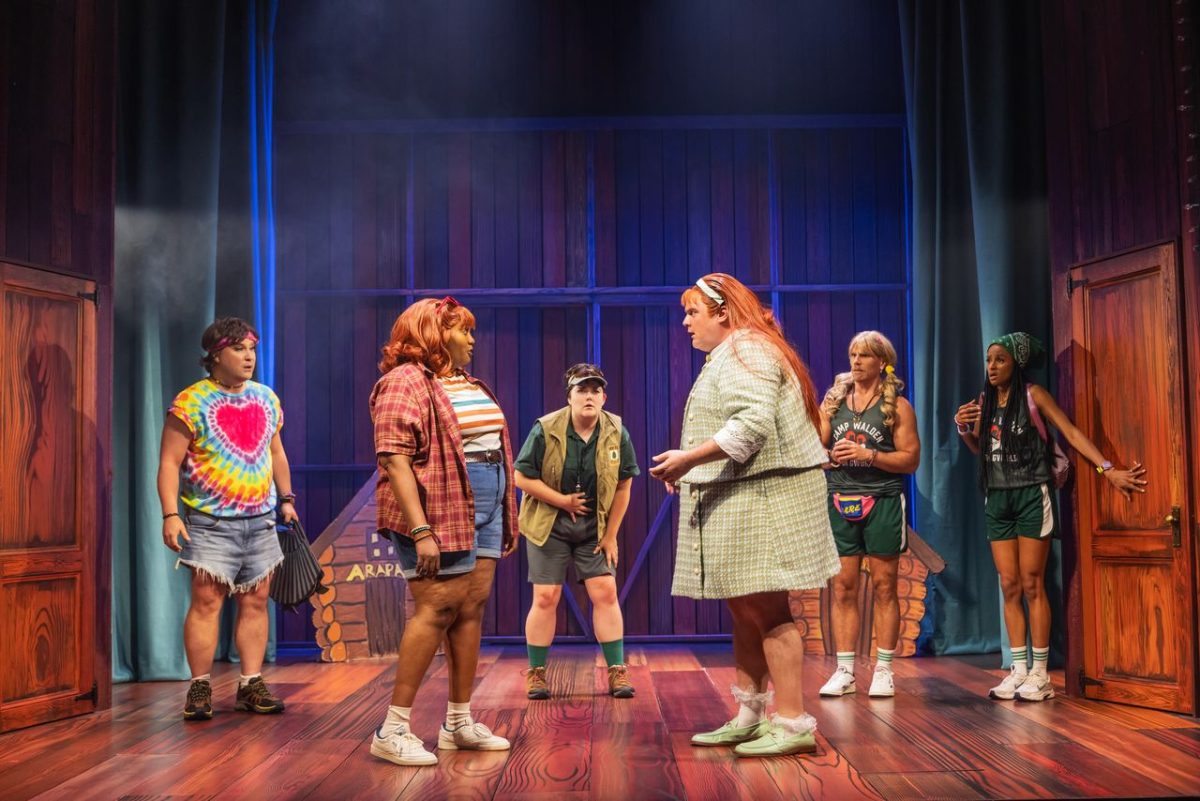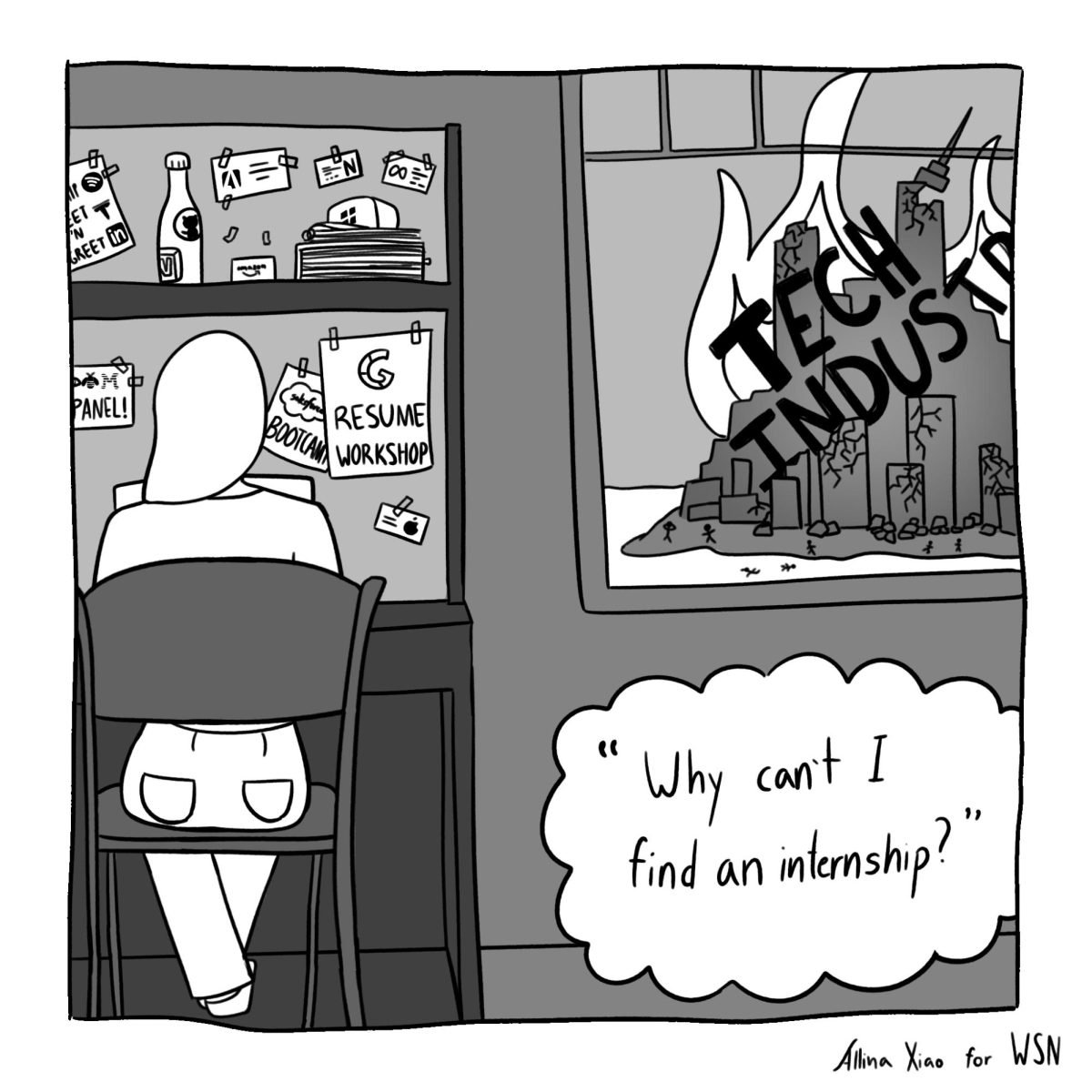Stage lights dim in the Jack Crystal Theater as eight performers dressed in dark mesh and glitter take the stage. Silence falls on a sold-out house while techno music pulses throughout the theater. Dancers move slowly and then swiftly, quickly dividing into complex formations and intricate movements. The show has begun.
The NYU Tisch Department of Dance showcased its latest set of student choreography in the Tisch Dance Works I performance on Oct. 3 and 4. With emerging choreographers presenting their individual styles, this event offered a look at the future of dance and the creative process of ten student choreographers. From trios to large group numbers, the nine performances were distinct and mesmerizing to watch.
The opening piece of the show, titled “Badass & Taunting: Particularly Scandalous Faces,” was choreographed by sophomore Dance major Ainsely Dellinger. Her piece blends classical technique and freeform choreographic devices. “I used contemporary and ballet steps while asking the dancers to perform with a more commercial quality,” Dellinger told WSN.
Students in the dance program participated in a summer semester in June focused on learning and working alongside local dance companies, while also having the opportunity to cast, choreograph and showcase their innovative pieces. As the production continued into the fall semester, student choreographers were encouraged to manipulate, refine and continue to craft their pieces.
Dellinger used their experience in choreography, including last year’s TDW showcase, to approach this piece from a different lens. Rather than solely using her extensive background in ballet and contemporary to choreograph, Dellinger experimented with choreographic devices — techniques and tools used by choreographers to create, structure and enhance dance compositions. For this piece, Dellinger implemented a “Bop It” randomized generator game where she assigned dancers to specific movements from “Bop It.” In this way, they created a more interesting system of choreography, which also fostered a playful attitude in the cast.
“When I can tell the dancers understand my concepts and feel confident and comfortable, they really start to perform it and it’s really satisfying,” Dellinger said. “I’m filled with this overwhelming hope. This piece is something where we can all come together as a community.”
In one part of Dellinger’s piece, dancers extended their arms upwards and shuffled their feet back and forth while eerily staring at the audience. Soon thereafter, they collaborated to perform an elaborate lift where one dancer was gracefully elevated into the air and spun around repeatedly while sustaining a split position. The lift looked effortless as she floated across the stage with her partner.
Emma Fang, a sophomore dancer in TDW, comments on the fun aspect of Dellinger’s rehearsals and reiterates the evolution of energy in the piece. As it was also her first time working with choreographic systems, Fang recalls the challenging nature of translating “Bop It” sounds into movement when creating their individual “phrases” — sequences or segments of movement.
“It’s really fun to be in my peers’ pieces,” Fang said. “That’s what makes Tisch really special — the fact that our first two years are devoted to pieces that are choreographed by our own peers who are also delving into their own creative process and finding what works best for them.”
Dancers contorted their bodies in unconventional ways — demonstrating pure athleticism, flexibility and strength. The unique lighting design of shifting colors and shadows on the stage, directed by choreographers with the help of student lighting designers, enhanced the energy of the pieces and brought further artistic vision to life. The show allowed friends and classmates alike to bond over their love of dance.
Contact Maya Santiago at [email protected].






















































































































































